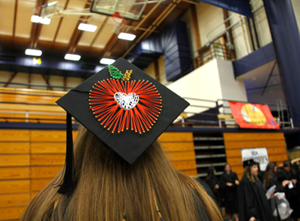Individuals fresh out of teacher certification programs typically know all the content that goes into running a successful program. But content and teaching are two separate things. Ironically, teacher preparation pours so-called knowledge about teaching into its newest crop of teachers and then tells them to go out, with notebook in hand, and observe a veteran teacher doing her thing. These student-teachers take notes based on what they deem vital all the while trying to envision how they will one day do the job. Right now, this is the model of teacher preparation. On some occasions, we allow our student-teachers to teach while veterans sit back and give “feedback” after a lesson is over and student learning commences. We think we are providing them with the ultimate teaching experience when we do this, but are we really?
Aspiring teachers need to work in cahoots with veteran teachers. Both veteran teachers and student-teachers need to be co-teaching at the same time. I know, it is hard to find time to plan a lesson together but without critical dialogue there is hardly any learning taking place. Teacher certification should work to validate both the student-teacher and the veteran teacher equally. Our programs are not doing this by shoving pedagogical course work down apprentices’ throats and then telling them to go and “observe” a teacher do her thing.
Teacher certification needs to provide an opportunity for teachers and apprentices to cogenerate learning for students. That means that the student-teacher and the teacher both need to be involved in the classroom experience. Eye gestures, hand movements and body language need to happen simultaneously with a new teacher teaching a class. If we want our new teachers to step into their own classrooms without a worry, then we need to facilitate a space for them to become a veteran way before they are even a rookie. We need to allow them to teach with the veterans, at the same time, in the same space.
This type of teaching apprenticeship can be reached easily. Apprentice teachers come into a classroom, and instead of taking notes and observing, or teaching up there all on their own, they should teach with the “main” teacher. Two minds are always better than one. And despite any potential divergence in teaching philosophy, teaching new teachers to become real teachers by way of teaching with them goes a lot further than sitting there, watching them teach, and taking notes.
[share title=”Share this Post” facebook=”true” twitter=”true” google_plus=”true”]

